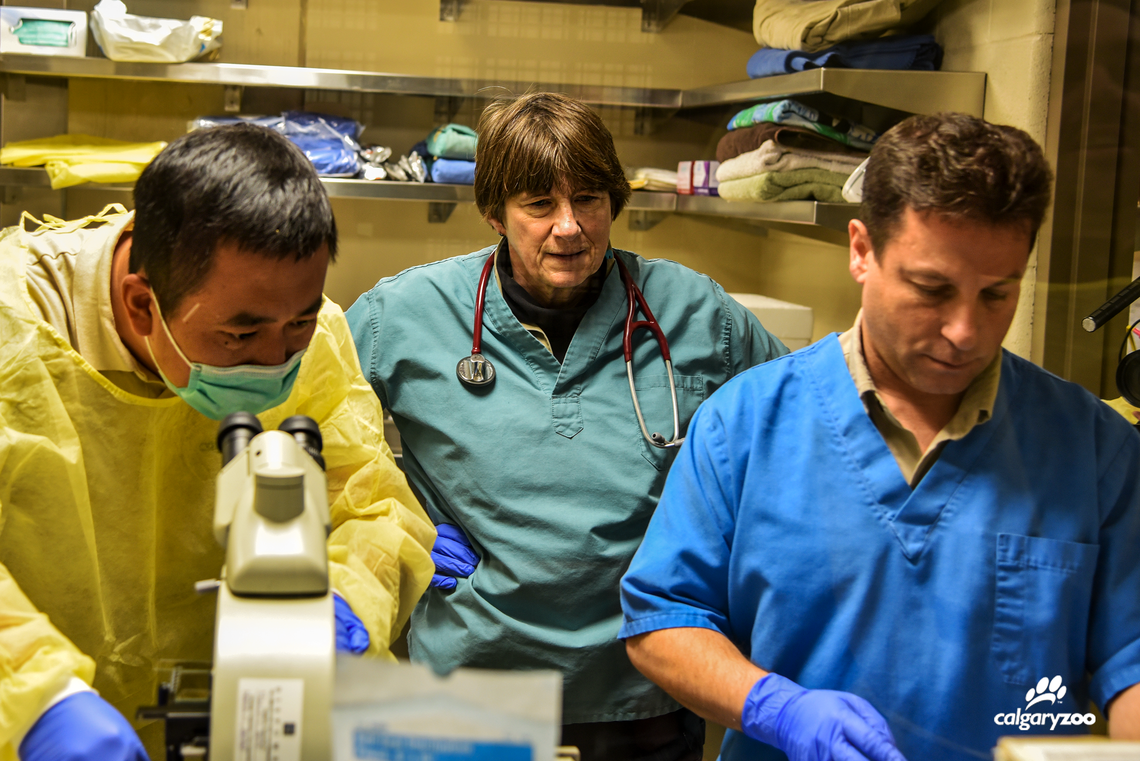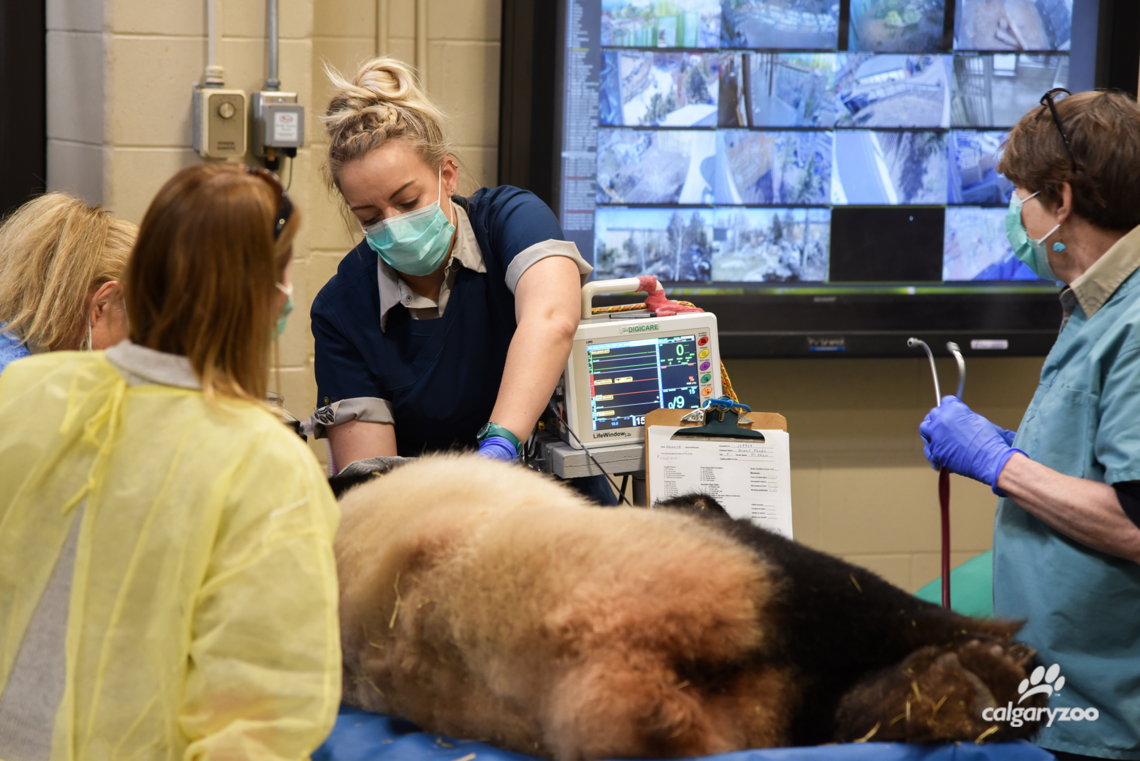April 23, 2019
Will the Calgary Zoo hear the pitter patter of little panda paws this year?

Breeding giant pandas isn’t easy.
First off, the window of opportunity for conception is only one to two days a year. If sperm and egg don’t meet during this time, it means waiting another year to try. Second, female pandas are picky about potential fathers. In the case of Er Shun, the female panda at the Calgary Zoo, breeding with the male Da Mao was a no-go.
“She doesn’t like him,” laughs Dr. Doug Whiteside, DVM, associate professor of conservation medicine at the Faculty of Veterinary Medicine (UCVM) at the University of Calgary and senior veterinarian at the Calgary Zoo. “It’s been tried in the past at the Toronto Zoo and she had no interest in him.”
So, artificial insemination was planned — with cryopreserved sperm from two giant pandas in China, deemed to be genetically good dads. Then it was a matter of time, patience, and lots of urine samples to determine the perfect time to artificially inseminate Er Shun.

Cai Zhi Gang, a panda specialist from China, worked with Sandie Black and Doug Whiteside.
Calgary Zoo
Panda urine tested seven days a week
Zookeepers collected urine samples twice a day. “Our keepers monitored her and when they saw her urinate, they’d shift her to another bedroom, go in with a syringe and aspirate it off the floor, and then transfer it into a tube that we’d then freeze until we analyzed them for hormone levels.
“With the help of the Toronto Zoo and UCVM technical staff, we were carefully monitoring the hormone levels in her urine to see what her estrogen was doing and what her progesterone was doing,” explains Whiteside. “We were looking for the exact time when the estrogen is starting to fall and the progesterone is starting to rise — that’s when we know she’s ready for breeding.”
Finally, on April 2, the hormone levels were just right. “It was a long day. We started in the morning, and we had Dr. Cai, a giant panda reproductive specialist from China, with us. We evaluated the semen that was previously cryopreserved to make sure that we had really good semen samples. Then we did the first insemination around noon, and followed up about eight hours later with another insemination.”

Jeff Lees, a fourth-year UCVM student on practicum rotation at the zoo, had the opportunity to help.
Calgary Zoo
Once-in-a-lifetime opportunity for one lucky vet med student
With such uncertain timing, it was a lucky coincidence for Jeff Lees, a fourth-year UCVM student, that he was doing his practicum rotation at the zoo at the same time.
“The cool thing about the UCVM-Calgary Zoo relationship is that our veterinary students can get these amazing once-in-a-lifetime opportunities,” says Whiteside. "Jeff was involved in helping us monitor anesthesia on the panda, and he got to do a physical examination of her.”
“Everyone was on the edge of their seats waiting for the hormone results. Is it go time or not,” says Lees. "I heard it might happen in March, but I was secretly crossing my fingers hoping it wouldn't happen until my rotation in April."
Now, the baby panda watch is on. And while that might sound simple, it’s not.

Er Shun underwent artificial insemination twice on April 2nd, using cryopreserved semen from China.
Calgary Zoo
Pregnancy pitfalls possible
“Pandas are delayed implanters. The embryo can basically just float around in the uterus in what’s called embryonic diapause until the conditions are right for it to implant into the wall and start to develop,” says Whiteside. On average, this floating period is two to three months, but it can be up to five months. “The actual gestation, once the embryo implants, is fairly short, shorter than a dog or a cat. The cubs are very tiny when they’re born.”
There is a possibility the embryo will be resorbed. Another possibility is a pseudo- or false pregnancy, something fairly common in pandas. “They have all the signs you’d expect to see in terms of weight gain, behavioural, and hormone changes, but they aren’t actually pregnant. So, it’s a bit of a waiting game to see if that’s happened.”
Regular ultrasounds will start in the next two months and Whiteside expects they will know if Er Shun is pregnant in about three to four months. If successful, this will be her second pregnancy. In 2015, she delivered cubs Jia Panpan and Jia Yueyue at the Toronto Zoo. They were the first giant pandas born in Canada.
But if a bouncing bundle of baby panda bear isn’t in the offing this year, the disappointment would come with a silver lining. It might mean next spring another UCVM student has the same once-in-a-lifetime chance Lees had.
“It’s great to end my year off with something so exciting and memorable,” says Lees. “It’s an experience I’ll never forget.
“My mom, of all the stuff I’ve done, this is what she’s the most proud of,” he adds with a laugh.
